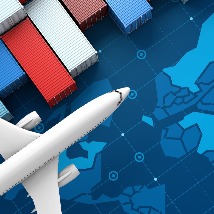More than one-fifth of the world’s water supplies go towards crops and commodities produced for export, a new study reports. As developed nations import water-intensive goods from overseas, they place pressure on finite resources in areas where water governance and conservation policies are often lacking.
Researchers from the Netherlands have quantified and mapped the global water footprint, highlighting how patterns in international commerce create disparities in water use. The new study, published today in theProceedings of the National Academy of Sciences, presents a spatial analysis of water consumption and pollution based on worldwide trade indicators, demographic data and water-usage statistics.
Arjen Hoekstra, a water management analyst at the University of Twente in Enschede, Netherlands, and lead author of the study, says that water supplies follow the flow of goods around the world. Water consumption and pollution, he says, “are directly tied to the global economy”.
However, Hoekstra suggests that water is rarely included in measures of economic and environmental production costs. Part of the problem is that so much of global water use is indirect. For example, to produce one kilogram of beef requires as much as 15,400 litres of water when issues such as grazing are taken into account, according to the Water Footprint Network, a Dutch non-profit organization for which Hoekstra serves as scientific director.
Another confounding issue is that global water supplies come not only from groundwater sources, but also from rainfall, a factor that has been largely excluded from previous analyses. Whereas research has indicated that agriculture accounts for roughly 70% of the global water footprint, the new data hold agriculture responsible for as much as 92% of worldwide water consumption and degradation. Precipitation is crucial to food production, says Dieter Gerten, a hydrologist at the Potsdam Institute for Climate Impact Research in Germany, but it is a “hidden resource” and typically left out of research and water-use planning.
Ruth Mathews, executive director of the Water Footprint Network, says that the detailed analysis can aid countries and private firms in understanding the real magnitude of their consumption. Companies, she suggests, often account only for their operational costs. But if an agricultural product, such as cotton or sugar, is a component of a final good, such as blue jeans or soda, “there’s a huge amount of indirect water use”.
Gerten describes the new findings as significant in calling attention to “the increasing disconnect” between production, regional water use and global consumer markets. He suggests that countries tend to focus on national resources while relying increasingly on water-intensive imports, effectively offshoring their water consumption.
As globalization binds countries in increasingly complex relationships, the risks of scarcity and resource degradation become not just regional but international concerns. Gerten says that future research and policy planning “cannot neglect the importance of these dependencies”.
Image: Virtual water balance per country and direction of gross virtual water flows related to trade in agricultural and industrial products over the period 1996–2005. only the biggest gross flows (>15 Gm3∕y) are shown. Courtesy of PNAS.
'庫間 > 해외자료' 카테고리의 다른 글
| 몬산토의 허위광고 (0) | 2012.02.14 |
|---|---|
| 코코아 부족 사태가 올까? 코코아콩이 기후, 질병, 수요 증가로 위험에 직면했다 (0) | 2012.02.14 |
| 보존농업 프로젝트 (0) | 2012.02.13 |
| 유전자변형 작물은 슈퍼 잡초, 식량 불안, 농약을 촉진시킨다 (0) | 2012.02.13 |
| 아트라진Atrazine : 과학을 포위하다 (0) | 2012.02.11 |



